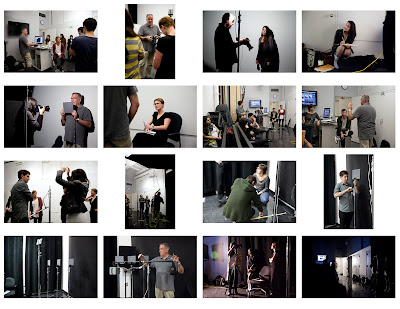Examples of MultiLight Approach

3 Light Demonstation with Break Down



3 Light Demonstation with Break Down


Photographs by Phillip Mansfield
Assignment 4 Three Lights
Using classic Rembrandt lights (45 to side 45 up) create a portrait with key (150 watt bulb), fill (75 watt bulb) and backlight (special spotlight bulb or 75 watt bulb).. Check blog under Lesson 4 to see how it should be laid out.
Using three lights invent your own formula.
Post one separate finished photograph for this one
Ratio A Fill Light B Key Light
8:1 4 stops over B 4 stops under A
4:1 2 stops over B 2 stops under A
3:1 1 1/2 stop over B 1 1/2 stops under A
2:1 1 stop over B 1 stop under A
1:1 Even Even
1:2 1 stop under B 1 stop over A
1:3 1 1/2 stop under B 1 1/2 stop over A
1:4 2 stops under B 2 stops over A
1:8 4 stops under B 4 stops over A
Using classic Rembrandt lights (45 to side 45 up) create a portrait with key (150 watt bulb), fill (75 watt bulb) and backlight (special spotlight bulb or 75 watt bulb).. Check blog under Lesson 4 to see how it should be laid out.
Using three lights invent your own formula.
Post one separate finished photograph for this one
Ratio A Fill Light B Key Light
8:1 4 stops over B 4 stops under A
4:1 2 stops over B 2 stops under A
3:1 1 1/2 stop over B 1 1/2 stops under A
2:1 1 stop over B 1 stop under A
1:1 Even Even
1:2 1 stop under B 1 stop over A
1:3 1 1/2 stop under B 1 1/2 stop over A
1:4 2 stops under B 2 stops over A
1:8 4 stops under B 4 stops over A

















